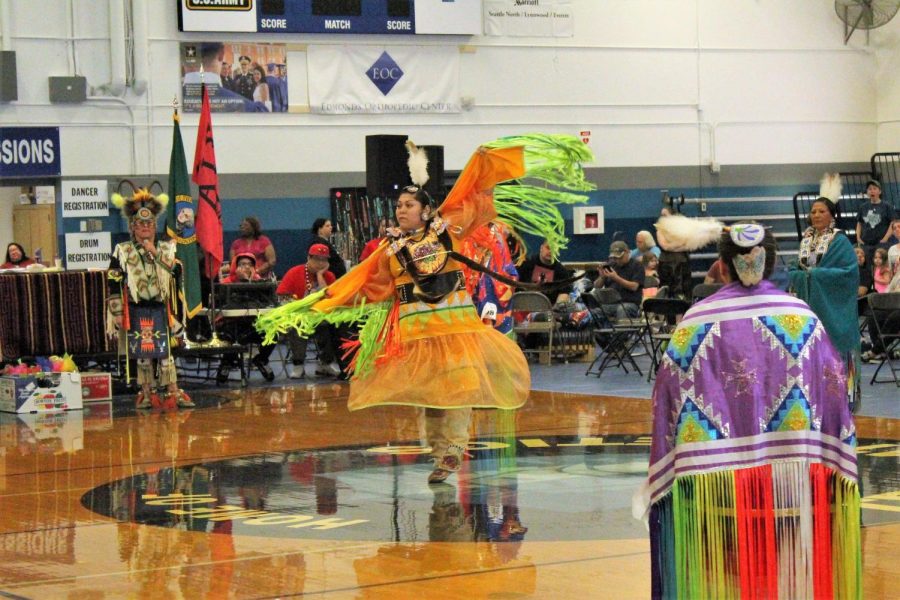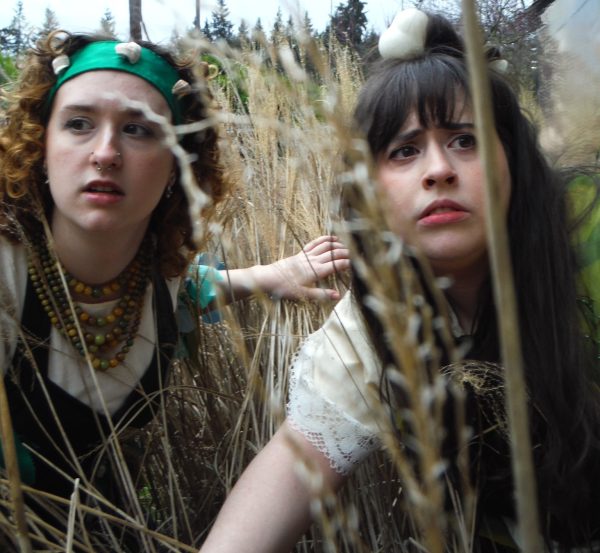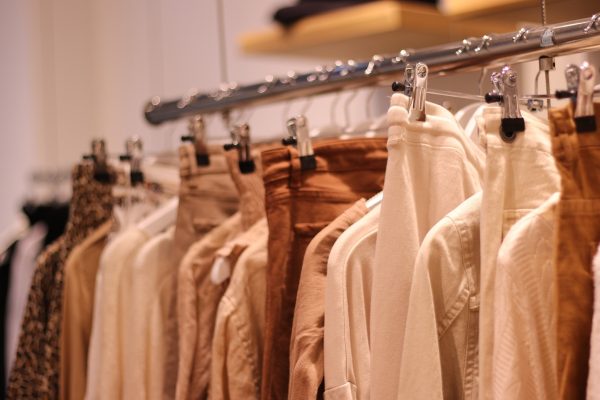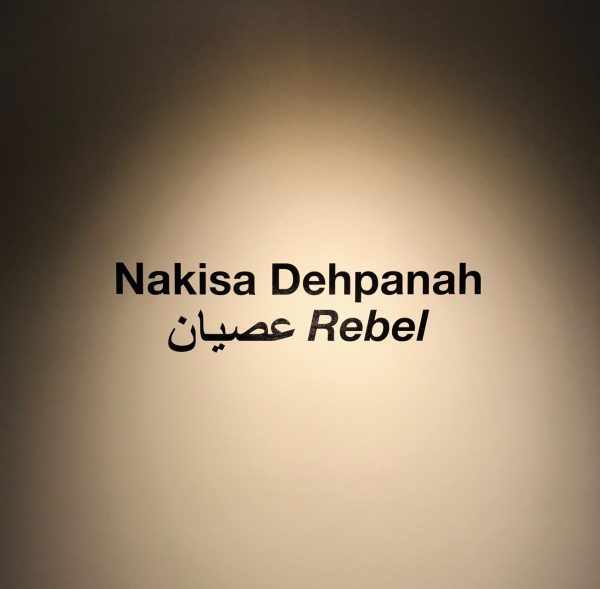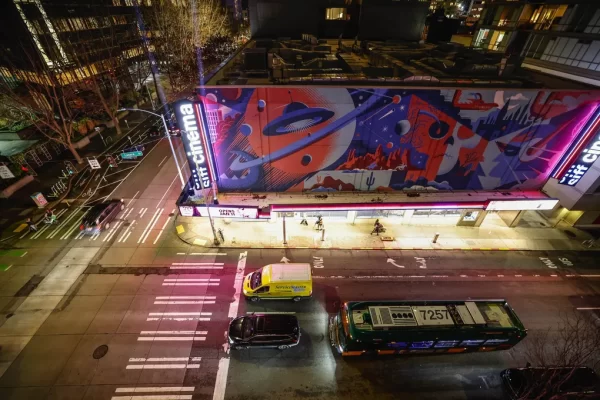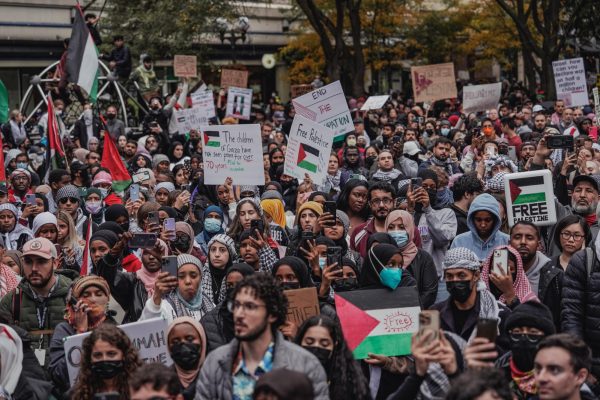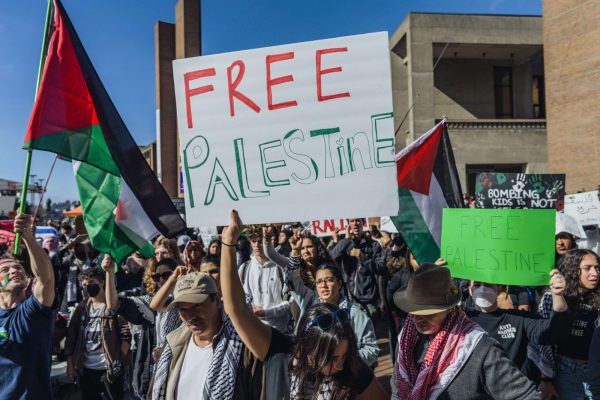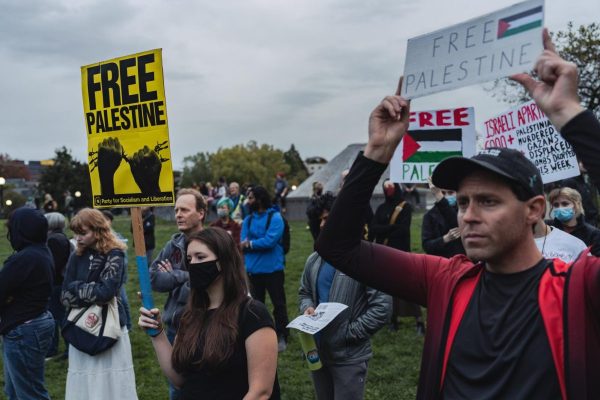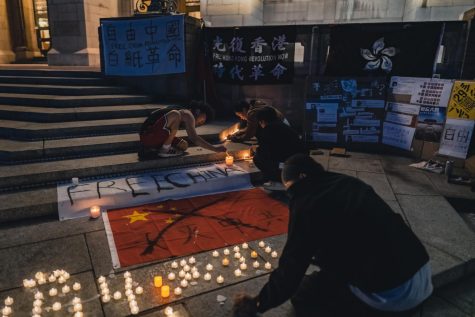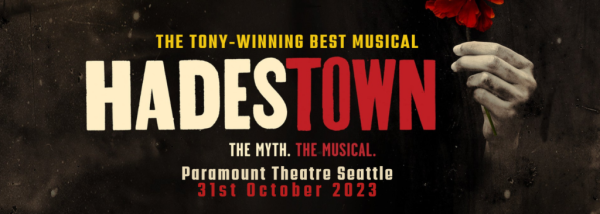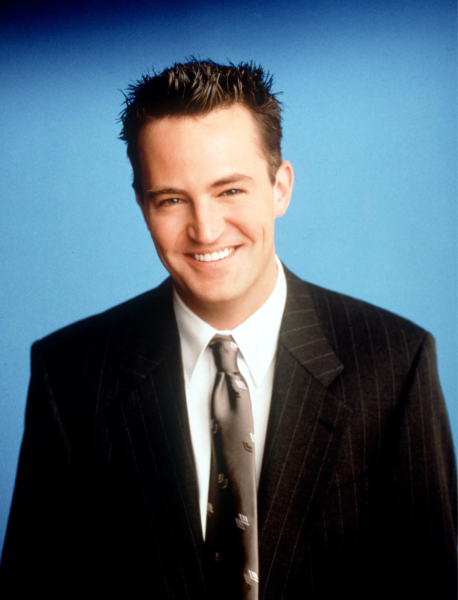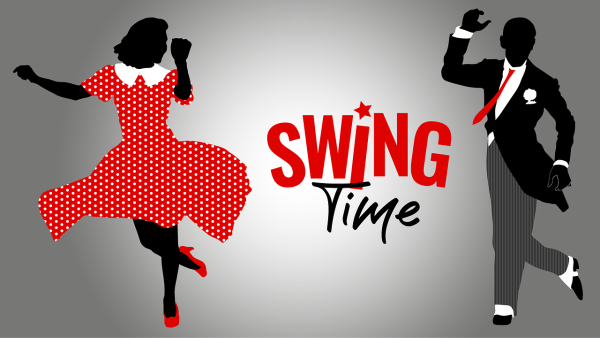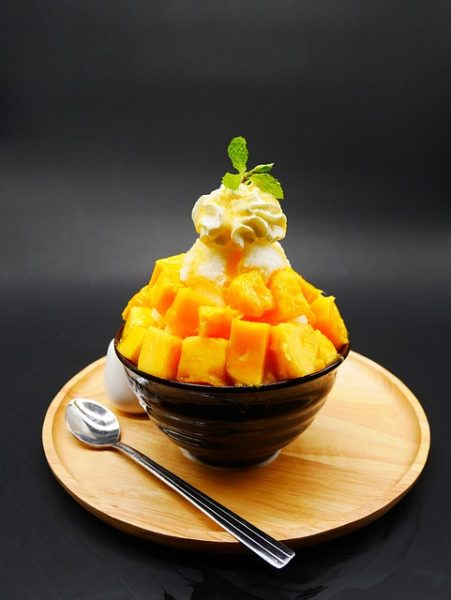34th Annual Powwow at Edmonds CC
Contestants performing in the Golden Age dance.
Outside the gym, people could order fry bread, Native American tacos, tea and coffee, along with other meal options. No admission was charged inside the gym. Beadwork, drums, shirts, blankets, earrings and shoes were on display. The true center of the powwow was the dance floor in the gym. Flags were raised and paraded onto the floor in the Grand Entrances on Saturday and Sunday. Drummers and singers on the edge of the floor performed song after song in impressive displays of musical talent. Songs were performed throughout the day, some open to all and others calling on certain people. One specific dance was the fancy shawl, or butterfly dance, performed by women. Another was the prairie chicken dance, a playful dance invoking a prairie chicken mating displays, which was performed by men. In inter-tribal dances, everyone was welcome. Dancers ranged in age from toddlers to elders.
Student volunteers assisted in the event. On Saturday, a dinner was served at the Cultural Kitchen, though students may know the area better as the community garden. Buffalo skewers were roasted on the fire pit. Clam chowder, salmon chowder and vegan chili were served along with salad and berries. Clams were cooked in the underground oven. Coffee and tea were served. Food was also brought to some elders in the gym.
There were three tri-chairs heading up the Powwow Committee with Lia Andrews as the staff chair of the committee. Jennifer Delia, the community chair, has a history of advocacy and helped raise awareness about the powwow in the community. Scott Rehaume, this year’s student chair, danced around 80 songs as last powwow’s Head Man. The Head Man and Head Woman are important roles in charge of leading the dances.
“It’s a pretty well-established powwow,” said Andrews. “It has a lot of longevity in the sense that it’s been going on for now 34 years, but it’s also been consistent. There hasn’t been a year since we started that we haven’t done it.” Many of the people in attendance are from Coast Salish tribes such as the Snohomish, the Duwamish, the Lummi and others. There were also people in attendance from tribes as far as California, Montana and Nevada. Additionally, the event was open to non-tribal members.
The powwow started at Seattle’s American Indian Heritage School. After the death of the school’s head, Bob Eaglestaff, students brought the powwow here. The powwow used to be much more student-run, but in the last decade institutions have been more involved. Tom Murphy, head of anthropology at EdCC, has been particularly involved in keeping the powwow alive. Some of the sponsorships come from local tribes. Starbucks gave coffee, Sprouts Market gave gift cards, Ivar’s chowder was represented at the Elders and Veterans Feed.
The regalia worn at the powwow was eye-catching. It is unique not only to tribes but to individuals. Some of the outfits looked timeless, some looked to be made with modern fabrics, one child wore the Batman symbol on his regalia. Andrews explained the differences between the regalia: “I can’t tell you from a dancer perspective, but it’s a representation of your tribal identity and your personal identity,” She explains that Native American people exist in a realm between traditional and modern. “Whatever part of someone’s identity they choose to embrace is on a spectrum. It’s just so delightful to see.”
The regalia is based on personal experiences and achievements. Parts are gifted by individuals. Eagle feathers are a widely recognized symbol. Gifting an eagle feather is a nuanced cultural practice, they are given as a symbol of recognition. Andrews has received feathers for graduating with her degree and for moving someone when she spoke. “Maybe you touched someone’s heart. Maybe they’re proud of you and want to recognize you. The eagle feather acts…as a symbol of achievement and honor. Honor’s a good word.”
The eagle feather acts…as a symbol of achievement and honor.
— Lia Andrews
“You don’t just buy it yourself,” says Maizy Bear, a woman who has been involved with this powwow for years. She received the gift of a marmite skin last year, recognizing her hard work as powwow chair.
Many people spoke to the importance of the powwow for native students, native people, and the community as a whole. “As an indigenous person, seeing so many people in one room. It’s powerful,” said Bear.
Andrews talked about the powwow not just being a space for Native students, but as a way to actively foster a feeling of belonging and togetherness. “All people are welcome. Not just native people, but all people. To break down stigma, to invite people to see us practicing our culture.” Before The American Indian Religious Freedom Act of 1978, many areas of Native American religion and culture were forbidden by law.
“It seems like such a really simple concept, you’re going to do well in places where you feel like you belong,” said Andrews.
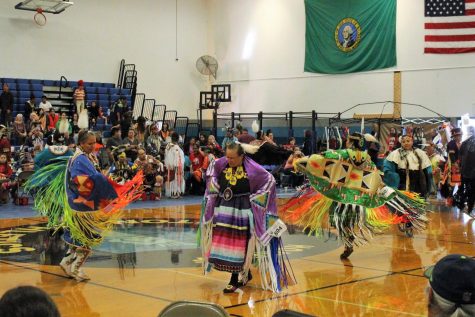
Native Americans are underrepresented in higher education. “I know we’re here, but there are very few of us,” says Andrews. According to research, underrepresented is at least partly due to a sense of not belonging on college campuses. Many Native Americans also start as non-traditional students and work while in college. Feelings of belonging have been shown to increase positive outcomes. Andrews states that being able to host a powwow at a college, and showing that college resources are available is a big deal. She stresses that college doesn’t have to be the route for everyone. “But it shows that if you want to do it, the community and the resources are here and the institution will support you.”

